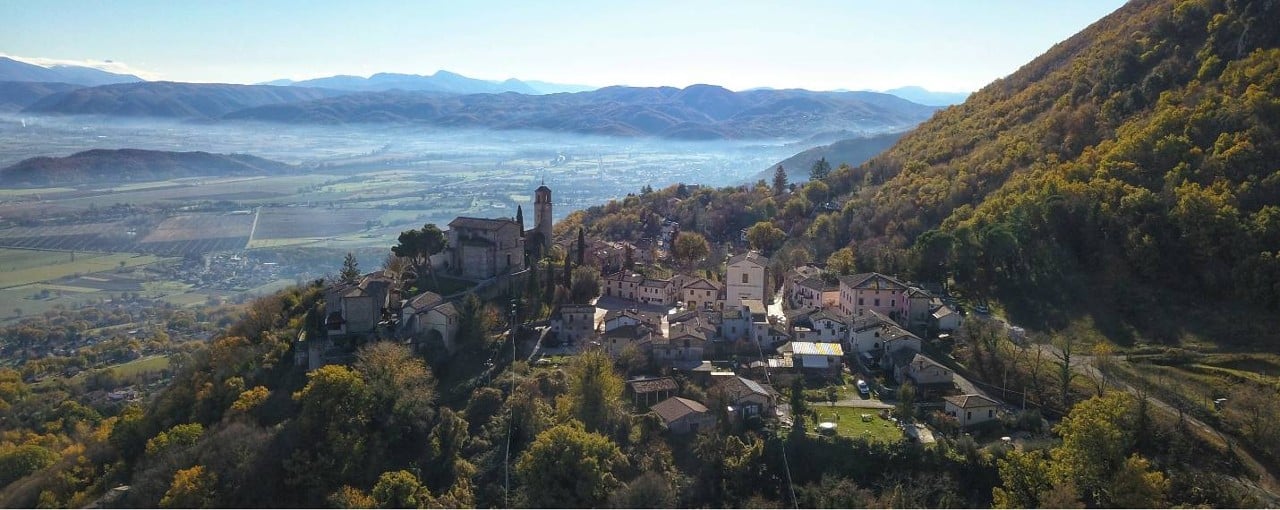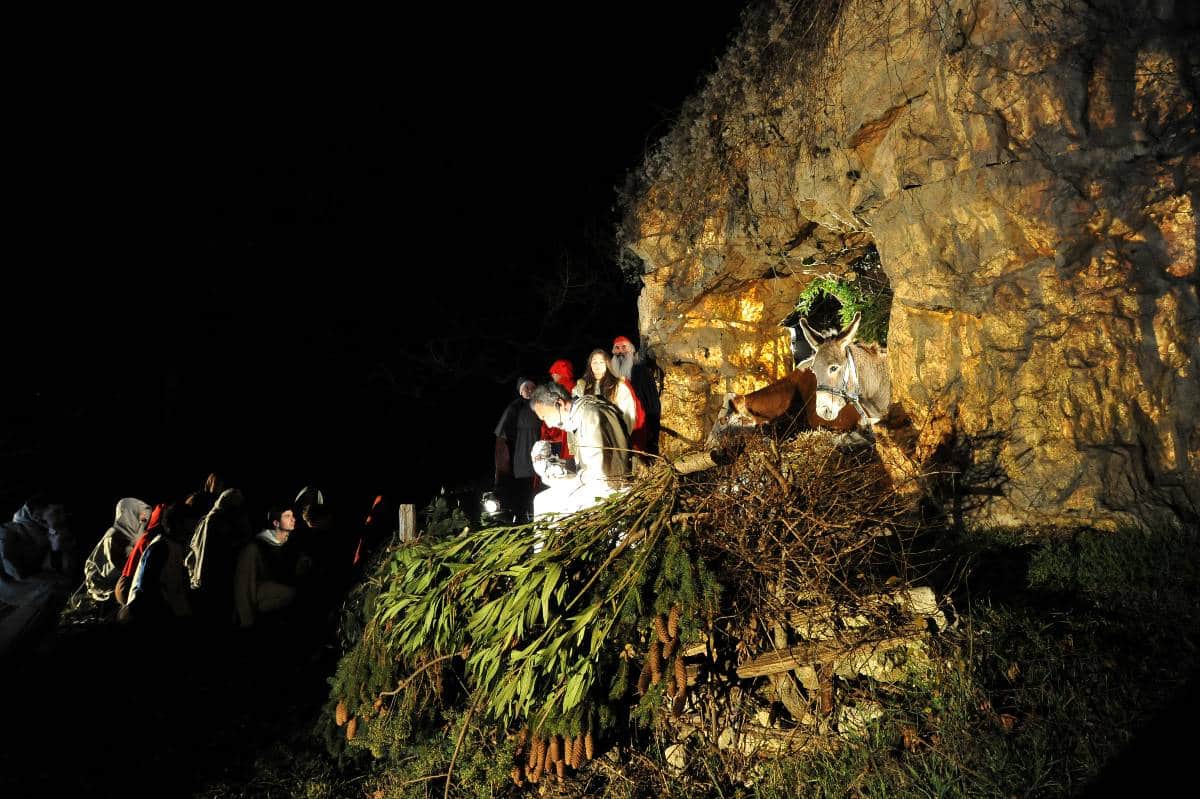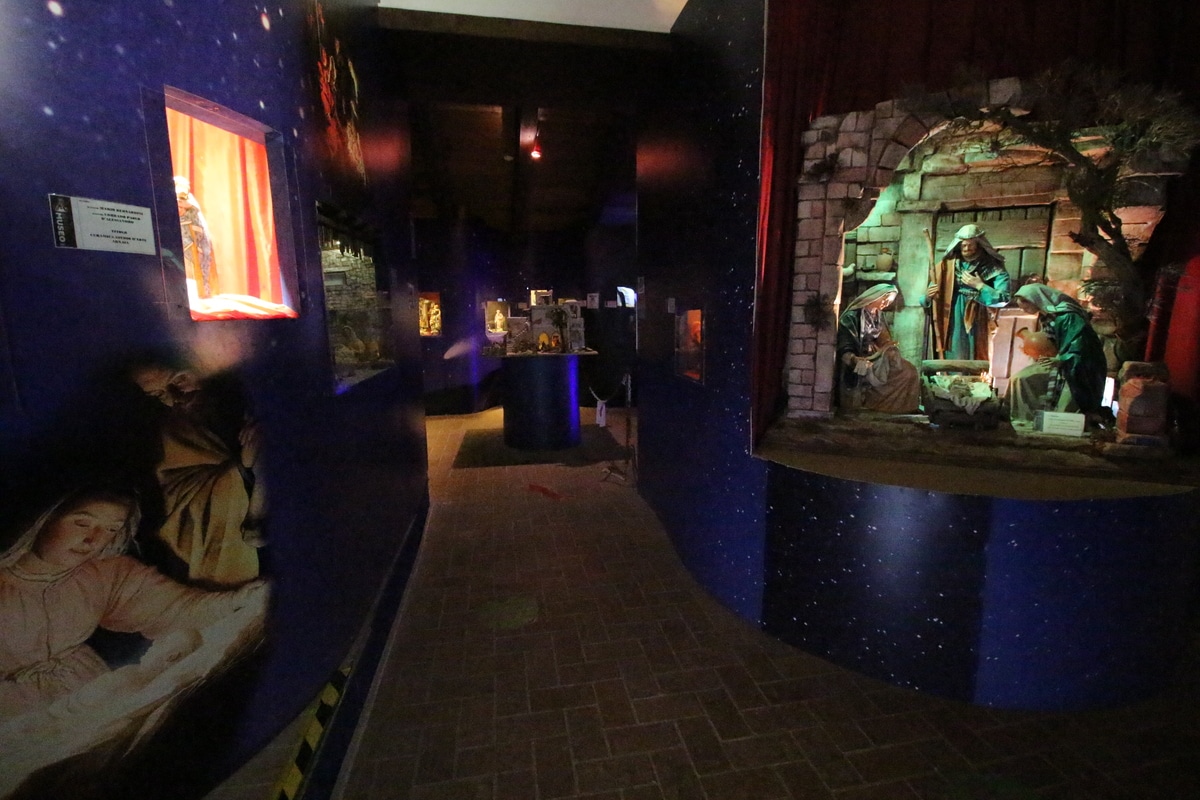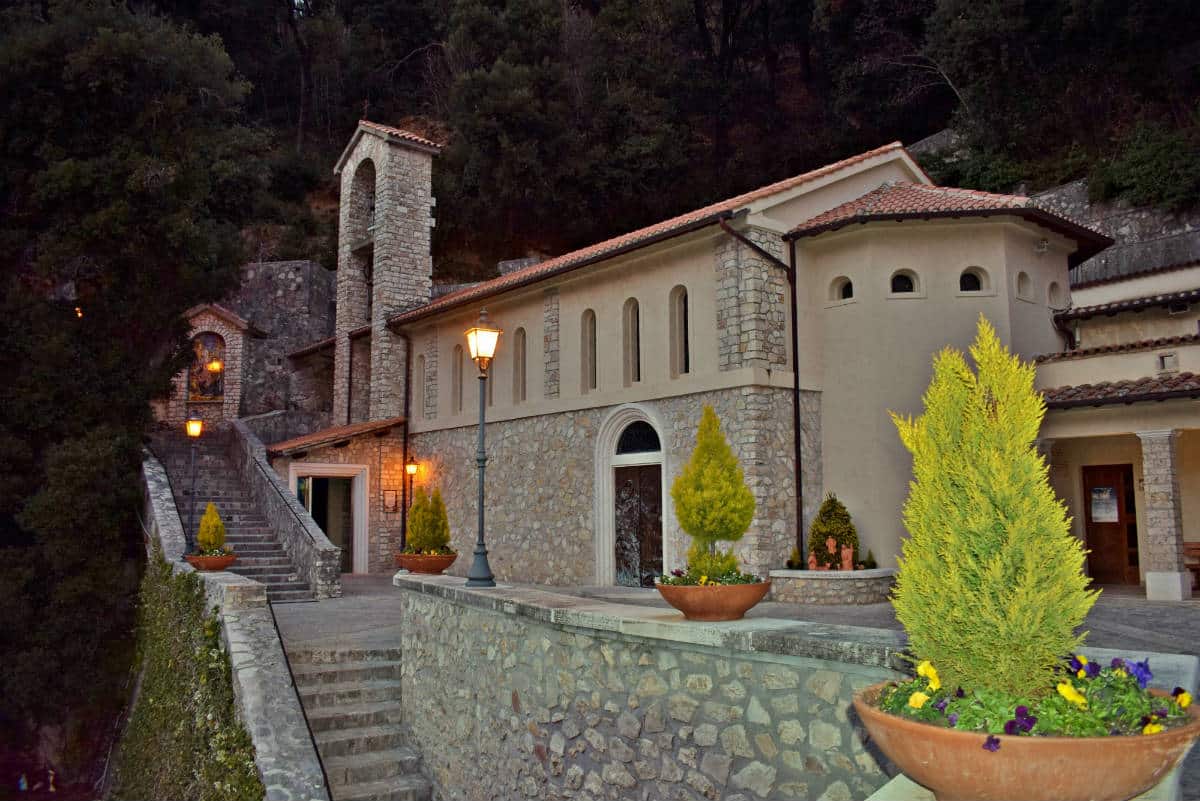In the year 1223 Greccio, then known as Grecciae, was a small village perched on a rocky bastion overlooking the vast plain of Rieti. Founded in the first half of the 11th century, presumably on the ashes of an earlier Greek colony, “curtis de Greze,” from which it probably also derives its present name, as early as 1016 there is certain news of its existence from chronicles in the Regest of Farfa, and other mentions of the place-name appear subsequently, with several variations, until 1091, when the name “Grecciae” seems to stabilize, and the village experiences a fair amount of development, favored by the abundance of flat arable land and good pastures. But it would still have remained a village like so many others, one of the countless beautiful ancient hamlets dotting the Apennines, if in 1209 it had not inspired the young Francis of Assisi, who came here in search of peace and meditation.

Maxgio1974/shutterstock
Francis was enchanted by the quiet and beauty of this valley, and made it his second home. He lived in these places for a long time, and founded four shrines, at Greccio, Fonte Colombo, Poggio Bustone and La Foresta, thus surrounding the Rieti plain with these jewels of art and faith that earned it the appellation “Holy Valley.” But it is precisely in Greccio that the saint remains most attached, inspired by the goodness and friendliness of the people and the beauty of the place, and it was here that he decided to give life, aided by a local nobleman and the entire population, to the first representation of the nativity: “I want to represent the Child born in Bethlehem, and in some way to see with the eyes of the body the hardships in which he was for lack of what was necessary for an infant, how he was laid on a crib, and how he lay on the hay, between the ox and the donkey.” Thus, assisted by the nobleman Giovanni Velita and the friars, Francis set up the first crib, and his follower and biographer, Thomas of Celano, recounts how “the night shone as bright as day, delightful for men and animals, the crowds flocked cheered with new jubilation before the renewed mystery, the forest resounded with voices, and hymns of jubilation echoed among the cliffs.”
Thus that distant night in 1223, consigns to history one of the world’s most beloved traditions, and ensures the small village of Greccio a luster that continues through the centuries, and still attracts thousands of visitors from all over the world.
Today Greccio is a small village, extraordinarily well preserved, where the crib tradition is part of daily life, for the entire population, Francis the Saint is “one of us,” and his spirit can be felt in the streets, alleys and homes. Frescoes depicting episodes from his life decorate the walls of ancient homes, and a large museum preserves a rich display of artistic nativity scenes, which also includes an extraordinary collection of cribs from every corner of the planet, confirming a universal love. At Christmas, then, the whole town is transformed into a huge nativity scene, representations of the nativity flourish everywhere, the main square hosts a crowded nativity art market, and in the square under the Sanctuary the evocative living nativity scene acted out by the population, dressed in period garb, is staged.

Foto di Massimo Rinaldi
Truly magnificent is the ancient village, which retains the characteristic spindle structure of its medieval origins, and overlooks the large Piazza Roma, surrounded by beautifully restored houses. On the highest part of the hill, dominating the village and the surrounding landscape is the beautiful Church of St. Michael Archangel, enriched by valuable 16th-century paintings and stucco decorations attributed to Gregorio Grimani, made in 1636 during the building of the Chapel. Also notable are the Baptismal Font, the high altar, a beautiful silver-gilt chalice and a 17th-century monstrance. But the Church of S Maria del Giglio also contains beautiful decorations and precious stuccoes, as well as tempera paintings dated to the early 15th century. Along the narrow alleys and in the squares, see the “Path of the Artists,” which runs through the entire historic center guiding visitors to discover 26 wall frescoes on the life of St. Francis, and just outside the town, the International Nativity Museum, built inside an old church from the 1400s, which holds precious scenic representations.

But the jewel of the municipal area is undoubtedly the Franciscan Shrine, located just a few minutes from the town. Legend has it that Francis, intending to found a monastery in Greccio, entrusted a burning ember to a village child, asking him to throw it far away, and that the ember, like a comet star, traveled the two kilometers separating the village from the Sanctuary, thus indicating the place where it would rise.
The Sanctuary, which still guards intact the grotto where the first crib was set up, is one of the most important historical assets for Christianity and for culture in general, linked as it is both to the figure of St. Francis and to the tradition of the representation of the nativity. It is the oldest of the Franciscan shrines, and finds no similar not only in Italy, but throughout Europe, because of its historical artistic as well as cultural and religious importance. Built around the grotto, it still guards both the chapel that constituted the first nucleus of the Sanctuary, the small church of St. Bonaventure, built in 1228, the year of the saint’s canonization, and the dormitory built around 1260, as well as other places of worship and extraordinary historical value, such as the Cellar of St. Francis, the Pulpit of St. Bernardine of Siena, and the dormitory cells of the friars, still preserved in their original state, as are all the oldest parts. In addition to the architectural jewels, the Sanctuary preserves priceless art treasures, such as the wooden choir surmounted by a crucifix also made of wood in 1400, the unique dormitory of St. Bonaventure carved in wood in the same period, a Madonna and Child by Biagio d’Antonio, a canvas also dating back to 1400 that reproduces the famous portrait of the saint, frescoes from 1300, 1500 and 1600. In the more modern wing, artistic and extremely valuable cribs are kept, as well as everyday objects that belonged to the saint.
As from the village of Greccio, there is an extraordinary view of the Sacred Valley and Mount Terminillo.
Thus, once you have seen the village and its Sanctuary, it is worth concluding the tour with a visit to the other three Franciscan Sanctuaries, each of which hides its own particularity, or devote yourself to the other attractions of this valley, which in addition to nature and landscape includes numerous archaeological areas with pile-dwelling settlements from protohistoric times, monuments from Roman times, well-preserved historic centers, well-preserved villages, farmhouses and rural villas of great value, typical productions such as wheat, flour, oil, wine, cheese and other specialties, ancient traditions still alive that are renewed in the many religious festivals and folk festivals.

Santuario Francescano del Presepe


0 Comment